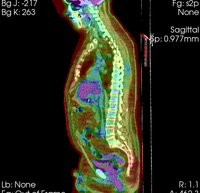Difference between revisions of "Projects:RegistrationLibrary:RegLib C08"
From NAMIC Wiki
| Line 36: | Line 36: | ||
===Download === | ===Download === | ||
*'''[[Media:RegLib_C08_WholeBody_PET-CT.zip|download entire package <small> (Data,Presets,Tutorial, Solution, zip file 135 MB) </small>]]''' | *'''[[Media:RegLib_C08_WholeBody_PET-CT.zip|download entire package <small> (Data,Presets,Tutorial, Solution, zip file 135 MB) </small>]]''' | ||
| + | |||
| + | [[Projects:RegistrationDocumentation:ParameterPresetsTutorial|Link to User Guide: How to Load/Save Registration Parameter Presets]] | ||
<!-- | <!-- | ||
comment | comment | ||
--> | --> | ||
| − | |||
=== Discussion: Registration Challenges === | === Discussion: Registration Challenges === | ||
Revision as of 17:48, 18 February 2010
Home < Projects:RegistrationLibrary:RegLib C08Back to ARRA main page
Back to Registration main page
Back to Registration Use-case Inventory
Contents
Slicer Registration Use Case Exampe #8: Intra-subject whole-body PET-CT
Objective / Background
Change assessment.
Keywords
PET-CT, whole-body, change assessment
Input Data
 reference/fixed : baseline CT: 0.97 x 0.97 x 3.27 mm , PET: 4.7 x 4.7 x 3.3 mm
reference/fixed : baseline CT: 0.97 x 0.97 x 3.27 mm , PET: 4.7 x 4.7 x 3.3 mm moving: CT: 0.98 x 0.98 x 5; PET: 4.1 x 4.1 x 5 mm
moving: CT: 0.98 x 0.98 x 5; PET: 4.1 x 4.1 x 5 mm
Registration Results
Download
Link to User Guide: How to Load/Save Registration Parameter Presets
Discussion: Registration Challenges
- accuracy is the critical criterion here. We need the registration error (residual misalignment) to be smaller than the change we want to measure/detect. Agreement on what constitutes good alignment can therefore vary greatly.
- the two series have different voxel sizes
- images are large volumes (>100 MB total)
- image content reaches border of image on two sides
Discussion: Key Strategies
- the two images have identical contrast, hence we consider "sharper" cost functions, such as NormCorr or MeanSqrd
- we have aliasing at the image margins that should be masked out
- the two images are far apart initially, we will need some form of initialization
- because accuracy is more important than speed here, we increase the sampling rate from the default 2% to 15%.
- we also expect minimal differences in scale & distortion: so we can either set the expected values to 0 or run a rigid registration
- we test the result in areas with good anatomical detail and contrast, far away from the pathology. With rigid body motion a local measure of registration accuracy is representative and can give us a valid limit of detectable change.

